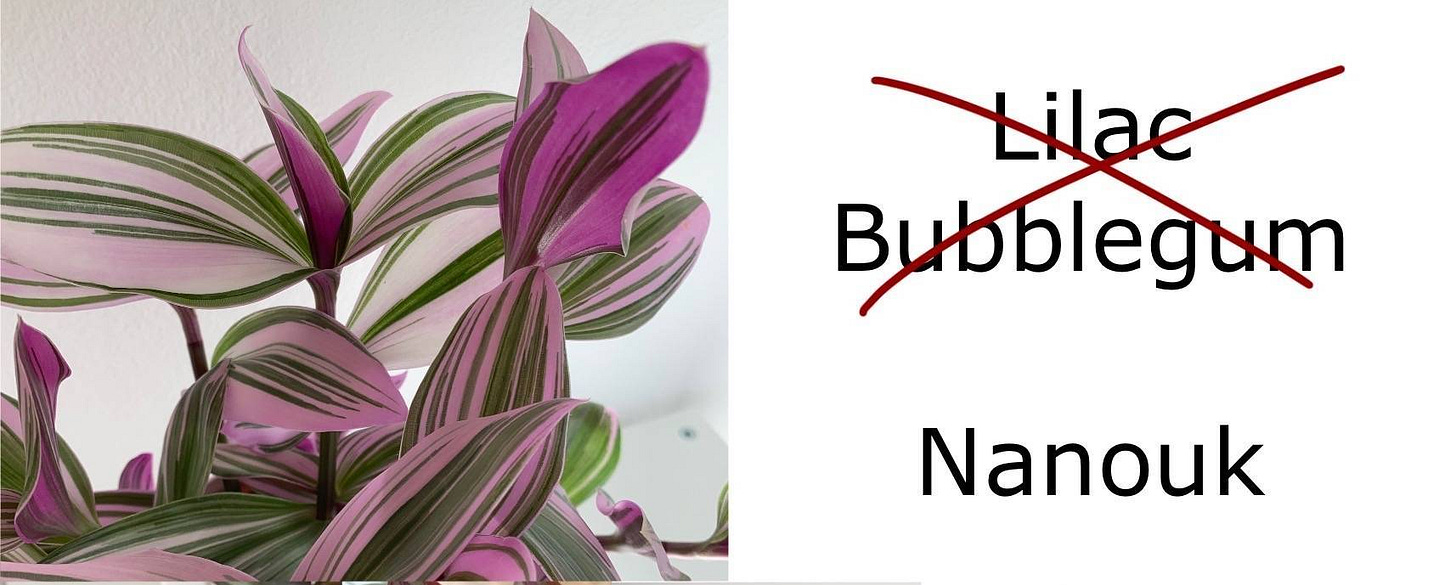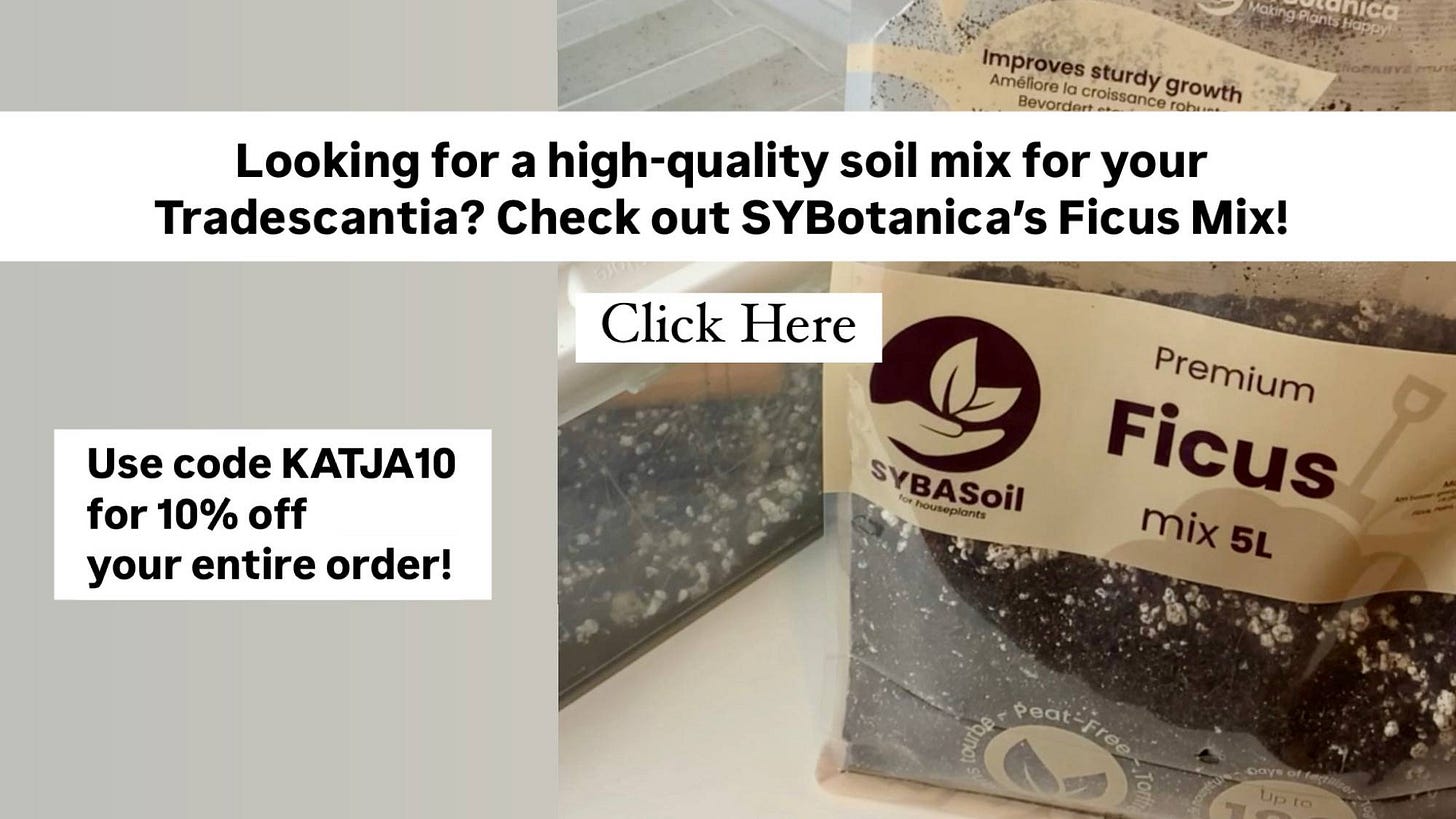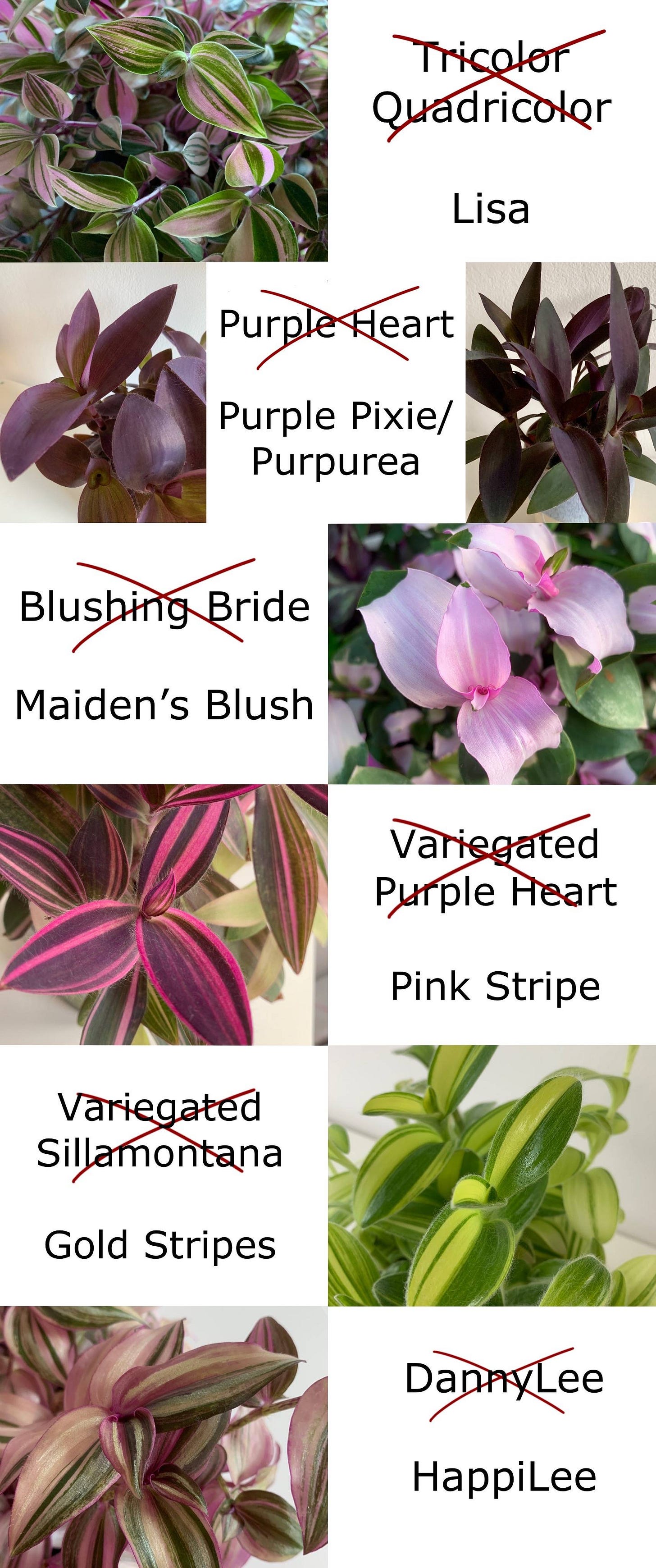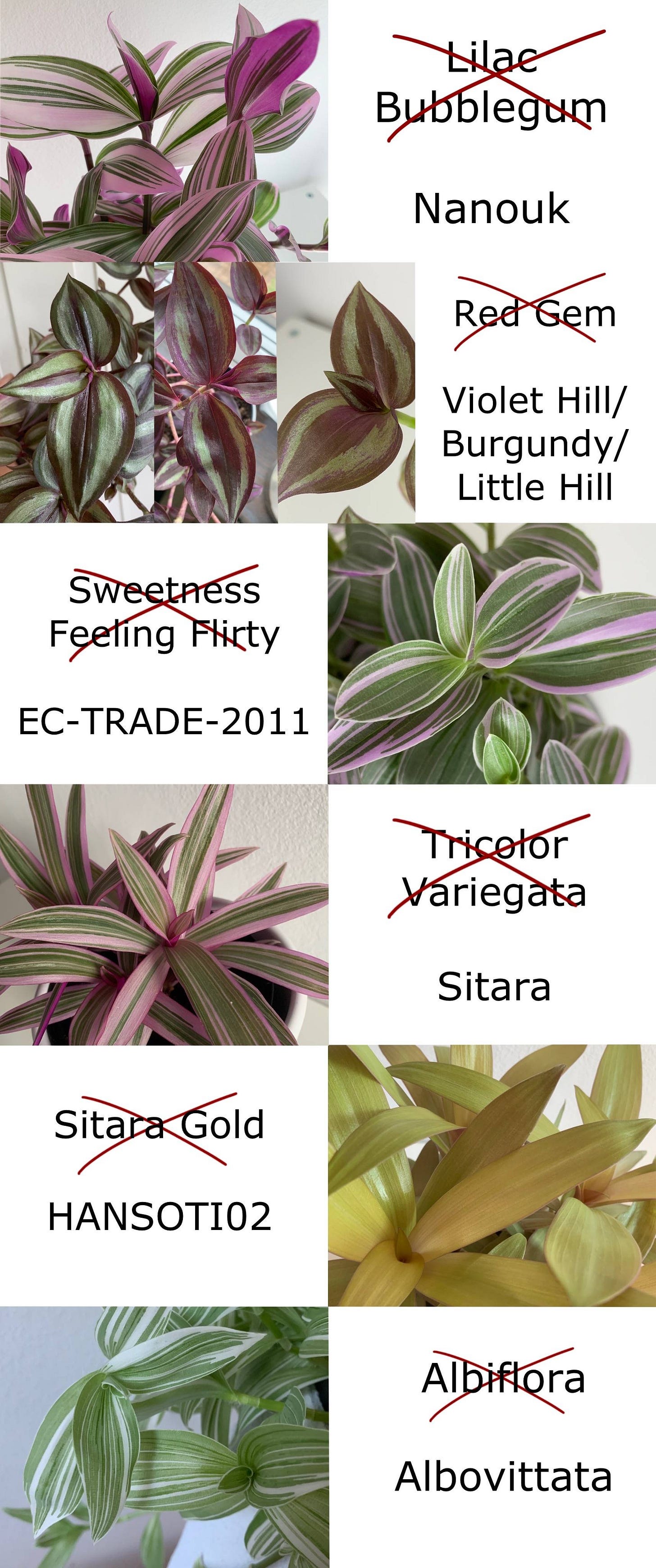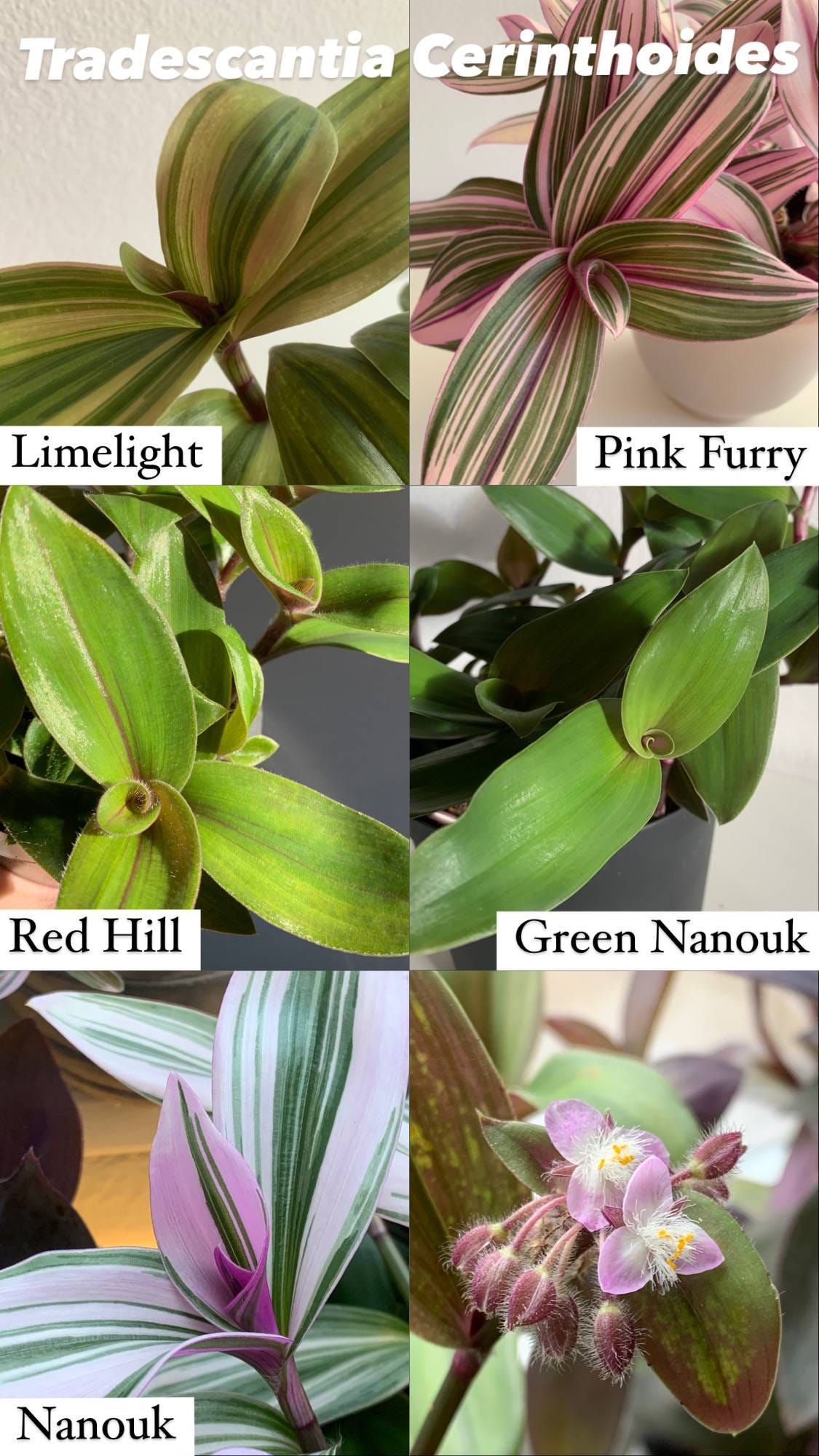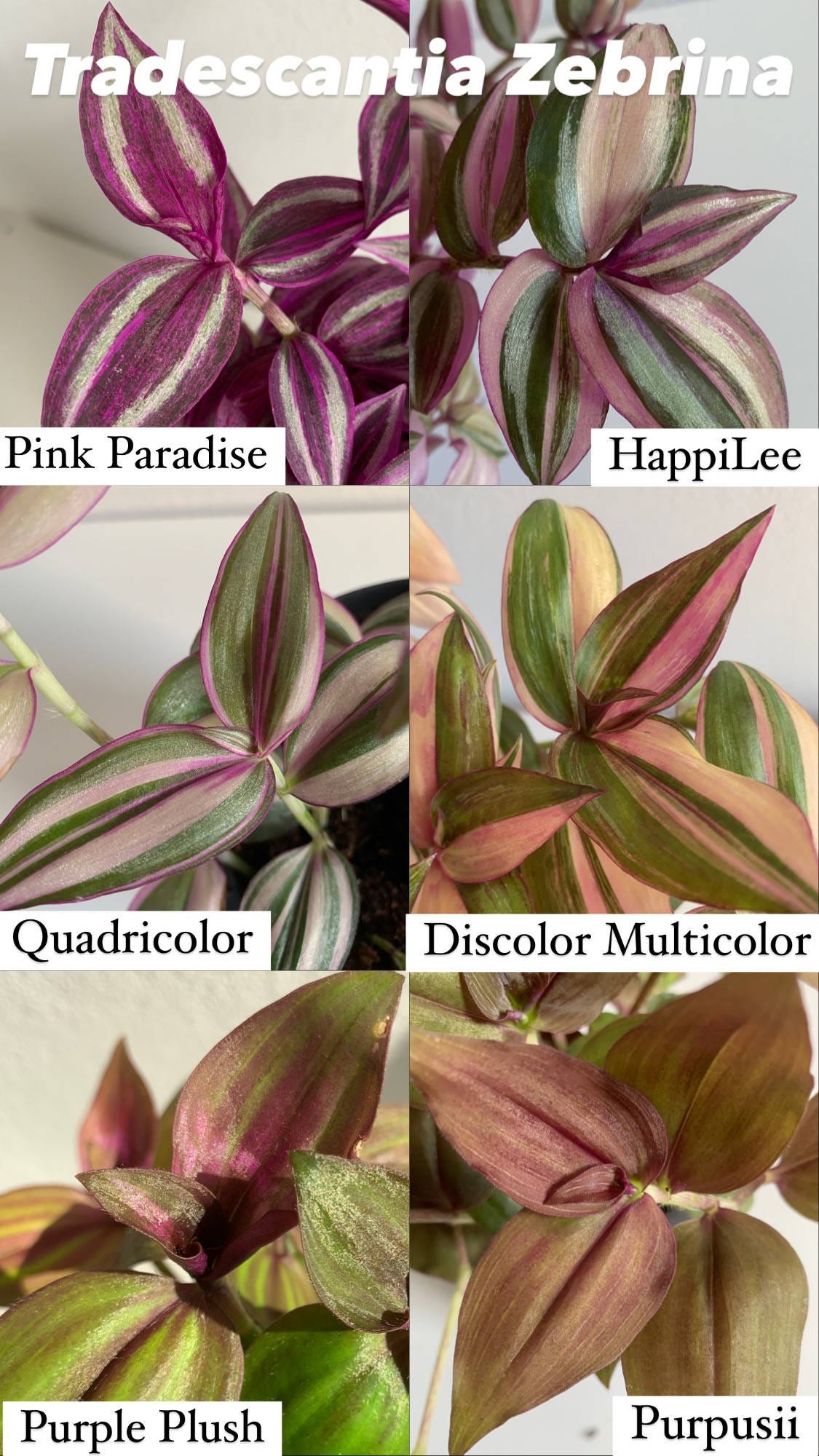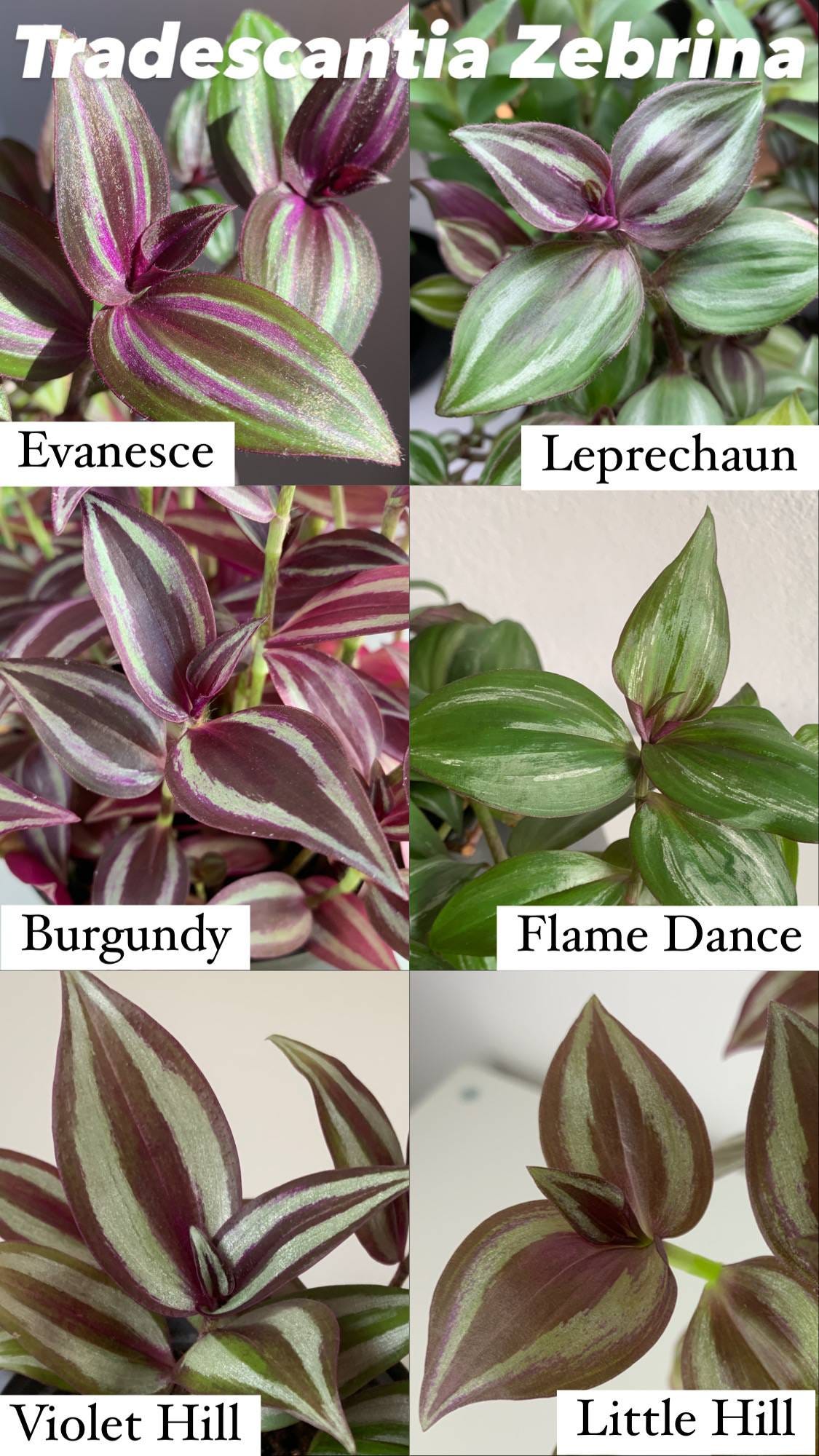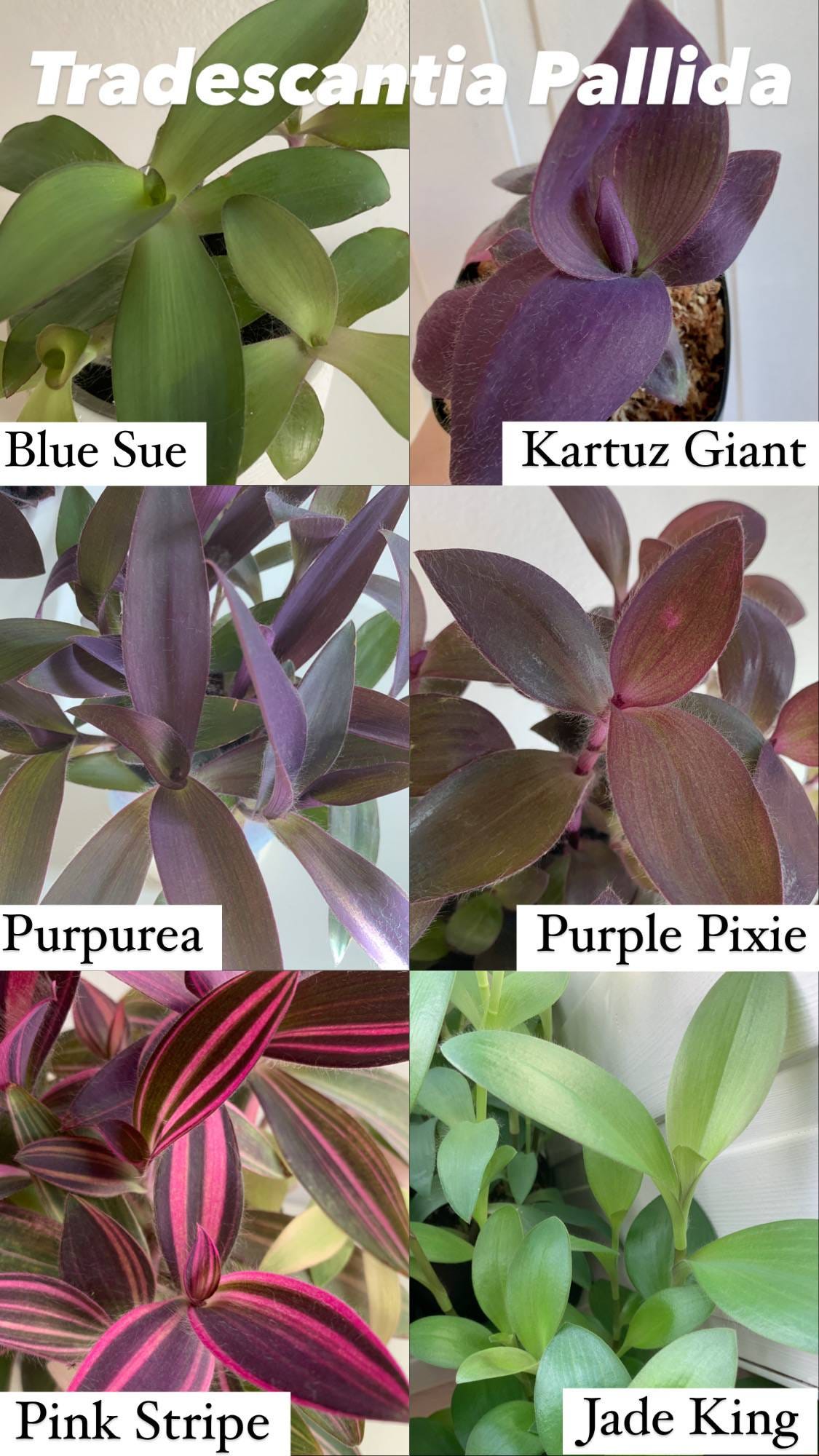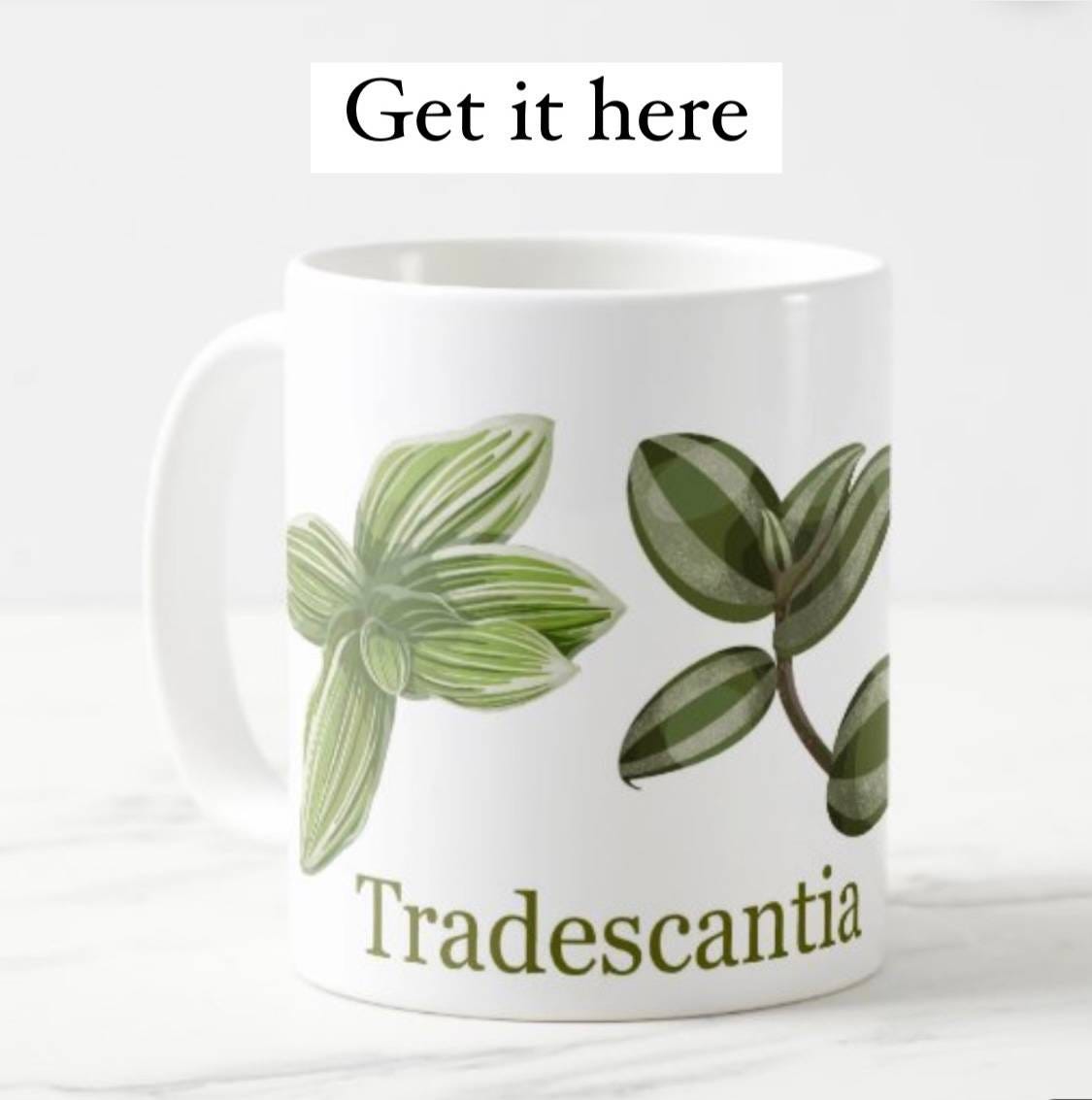Looking to Identify Your Tradescantia? Here’s What You Need to Know
Disclaimer: This post contains affiliate links, which means I earn a small commission if you make a purchase using my links or my code, at no extra cost to you. Your support helps me keep sharing Tradescantia tips and content—thank you!
Have you ever added a new Tradescantia to your collection, feeling certain about its name, only to later realize it’s not what you thought? Or maybe you’ve tried to identify a plant by comparing it to a picture, thinking you found a match, only to discover later that it wasn’t even close? You’re definitely not alone!
With so many Tradescantia varieties out there, it’s easy to assume that identification is as simple as matching leaf colours and patterns. But in reality, it’s much trickier than that. The same plant can look completely different depending on how it’s grown, and even widely shared identification charts aren’t always accurate.
So why is it so difficult to identify a Tradescantia just from a photo? Let’s break it down!
Why Tradescantia Identification Isn’t Always That Simple
1. The Picture Might Not Show All Possible Options
When you compare your plant to a chart or a reference image, you’re assuming that the picture includes every possible variety it could be. But new Tradescantia cultivars are introduced all the time, and some older varieties are still circulating under different names. If your plant isn’t in the picture, you might misidentify it.
2. Growth Conditions Can Change Its Appearance
Light, humidity, soil, and watering habits all play a role in how a Tradescantia looks. A plant growing in bright light will have more vibrant colours, while one in lower light might look dull and stretched out. Even leaf shape can change depending on how the plant is growing!
3. How Do You Know the Picture is Correct?
Not all identification charts are accurate. Some include mislabeled plants, outdated names, or even completely incorrect information. A picture might look convincing, but how do you know the person who created it identified the plants correctly?
4. Pictures Get Outdated
New Tradescantia varieties appear all the time, and old ones sometimes resurface under different names. A chart that was helpful a few years ago might now be missing many newer cultivars.
5. Different Names for the Same Plant
One of the biggest headaches in the plant world, Tradescantias are often sold under different names depending on the region, nursery, or even just a creative seller. The same plant might be sold under multiple names, making it even harder to know what you really have.
So, What Can You Do Instead?
Look at multiple sources – Don’t rely on just one picture! Check different references, plant groups, and forums.
Compare growth habits, not just colour – Is it compact or trailing? Does it branch easily? These details can help narrow down possibilities.
Ask experienced collectors – If you’re unsure, reach out to the plant community. Many collectors have seen more variations than what’s in the standard charts.
Accept that some plants may stay a mystery – Sometimes, the exact ID just isn’t possible. And that’s okay! It doesn’t make the plant any less special.
Commonly Mislabeled Tradescantias
Even if you do your best to identify a Tradescantia, misnames and incorrect labels can make things even more confusing. I often see Tradescantias shared or sold under the wrong names, and it happens more often than you’d think! With so many varieties out there, it’s no surprise that keeping track of their names isn’t always easy.
Getting the name wrong isn’t just annoying, it can lead to real confusion. You might buy a plant thinking it’s a rare variety, only to realize later it’s one you already have. Or you might struggle to find the right care tips because your plant is labeled incorrectly. And once a misname starts spreading, it becomes even harder to find accurate information.
Here’s some of the most commonly misnamed Tradescantias to help clear up some of the confusion.
There are so many more Tradescantias out there with confusing or incorrect names. For example, there’s no such thing as “Albiflora” anymore, that’s just an old name for what we now call Fluminensis. Similarly, “Blossfeldiana” is the outdated name for Cerinthoides.
If you come across a “Pink Joy,” chances are you’ve actually found a Violet Hill. A “Purple Passion”? That’s just another name for Burgundy. Biltmore Bimbo is actually officially named Kartuz Giant.
One particularly confusing one is Pistachio White. It seems to be identical to Albovittata, but it has its own official name: TPIWH01-0.
It’s no wonder Tradescantias can be so hard to identify! Keeping track of the correct names is a challenge, but knowing what you really have in your collection can make all the difference.
Some Tradescantias Are Easy to Identify, Others, Not So Much!
I’m really sorry if I’ve let you down a bit here. I know you probably didn’t come here expecting to hear that identifying your Tradescantia is tricky business. The truth is, it can be hard, but don’t lose hope! Sometimes, it’s definitely possible to figure out your plant’s identity just from a photo.
Some Tradescantias have such unique appearances that they stand out right away. When a plant has a distinct shape, colour, or pattern that isn’t shared by many others, you can often be quite confident about its name just by looking at a picture. For instance, varieties like Tradescantia Sillamontana or Pallida Purple Stripe are usually easy to recognize because of their distinctive traits.
On the flip side, some other Tradescantias can be trickier, with small differences that make identification a real challenge. I’ve been growing Tradescantias for years, and there are still times when I need to keep tags in my pots to remember which is which!
So, while it might be tough at times, don’t get discouraged. You’re not alone in this, and even experienced Tradescantia enthusiasts face the same struggles sometimes. And don’t be afraid to ask for help!
If you haven’t already, don’t forget to SUBSCRIBE to get all the tips and tricks you need to keep your Tradescantias happy!
Until next time, happy planting! 🌿
Katja
P.S. Did you know I have a Tradescantia-themed coffee mug? If you love these plants as much as I do, you’ll love this design!


